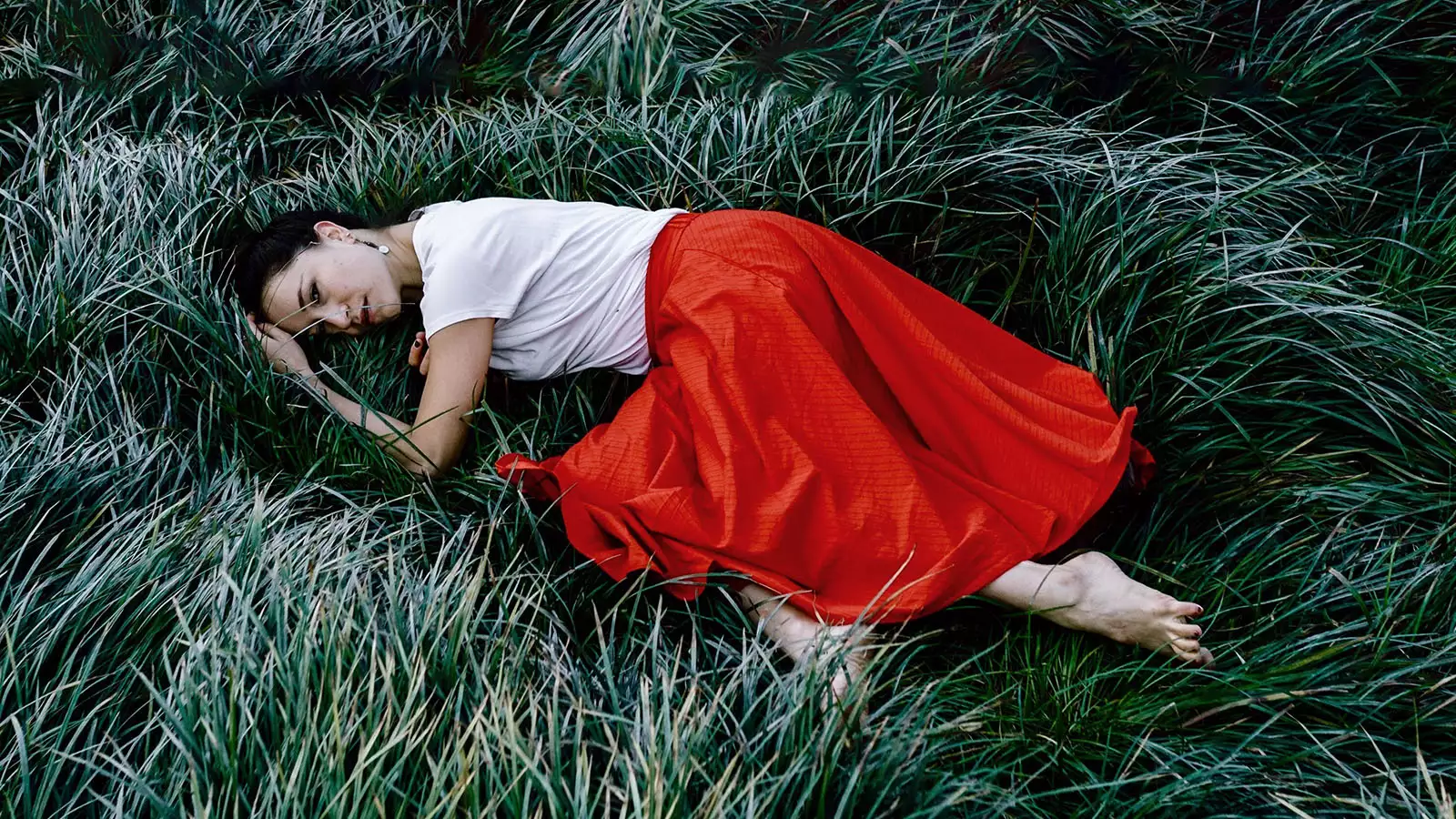
With the Women in Agency Festival, La Femme Theatre Productions founder Jean Lichty ’81 gives recent Barnard grads a powerful platform for original work

What do the circus, parkour, augmented reality, and Edgar Degas’s sculpture Little Dancer Aged Fourteen have in common? For choreographer and director Sarah Silverblatt-Buser ’15, the various forms of art and media represent points of entry for audiences from a variety of backgrounds to experience art that they might not otherwise see or hear.
“I’ve always been really attracted by how we can build bridges between different ways of thinking, but you can’t always be thinking, you also need to feel,” she says. “Art is a good way to sort of hit you in your guts.”
Silverblatt-Buser, who has been based out of Paris since 2018, came back to Barnard last fall to teach a dance class in digital performance at the Movement Lab using virtual reality. The foundation for the class rested on poet Federico García Lorca’s In Search of Duende, a collection of philosophical writings that underpin much of her work. She also taught a class on improvisation.
In the book, García Lorca probes duende, an indescribable and elusive spirit that Silverblatt-Buser says inhabits the performer “sometimes, when you’re lucky.” She adds that duende isn’t just what artists seek but what attentive audiences search for too. She stresses to her students that duende isn’t limited to the stage; it can be found on other platforms, such as VR or AI.
“My whole thesis is when we’re dealing with technology, it is never using it just for technology’s sake but finding how it can bring us back to something that’s even more human,” she says.
Trained as a sociologist as well as a dancer, Silverblatt-Buser credits her liberal arts background with giving her a sense of the “larger picture,” ultimately providing a holistic vantage to view most art. She sees making art as a way to participate in society.
“I always felt frustrated seeing art that felt like it was being made for other artists, for those already indoctrinated into that world,” she says. “My senior thesis at Barnard was on Lincoln Center’s education programs, on teaching artists, and their role as a bridge between the community and the institute.”
Her search for access points and for the ever-elusive duende has led her to many unexpected places, both literal and figurative. Colleen Thomas-Young, chair of the Dance Department and professor of professional practice in dance, sparked the search by encouraging Silverblatt-Buser to enroll in Barnard’s Dance in Paris summer program.
“That was when I first really saw that dance could be many other things, that movement could be many other expressions, that dance didn’t have to live in one kind of space,” she says.
Within four years, she was back in Paris as a professional, working with Yoann Bourgeois, an acclaimed French choreographer noted for his background in the circus as well as his “decompartmentalized” artistic approach. (She worked with him as an artistic assistant on Passants, the piece shown above.)
“Yoann’s work has sort of an acrobatic circus element to it,” she says, adding, “I wouldn’t call myself a circus artist, but I did like horse vaulting when I was young in New Mexico.”
In 2021, her versatility caught the attention of the multimedia director known by the mononym Gordon. He approached her to choreograph and perform as part of an augmented reality experience commissioned by the Musée d’Orsay in Paris. In the piece, she performed before a motion capture camera as Degas’s Little Dancer. Amid pandemic social distancing, the performance “opened” the museum through technology.
With her experience — from horse vaulting and circus acrobatics to becoming a little ballerina — it would seem that parkour would not be a terribly difficult transition for the artist. Parkour, the acrobatic street art of moving around obstacles by running, climbing, or leaping efficiently, is somewhat akin to American skateboarding in its daring. In 2022, Gordon, working with music director Julien Masmondet, asked her to create an in-person return to the museum with parkour artists and an acrobat-dancer. The choreography incorporated the museum’s massive nave and exterior and was set to the minimalist music of Steve Reich (as seen below).
“Not only was parkour an entry point to the museum, and sort of highlighting the museum as this incredible architectural space, but also an entry point to music that might not be otherwise deemed accessible by young people,” Silverblatt-Buser says.
Likewise, Reich fans were probably encountering parkour for the first time. “It was definitely quite a diverse audience, in terms of generations and where people were coming from,” she says. “I just loved seeing my friends who brought their kids. They were glued to the entire performance, which, you know, try bringing a 10-year-old to a Steve Reich concert.”
The success of the performances brought about yet another commission, this time from Lincoln Center, to create a multiuser, movement-based experience in VR called Collective Body. Silverblatt-Buser used her time at Barnard to research that piece in the Movement Lab, and it will premiere next summer. Meanwhile, back in Paris, her collaboration with Gordon continues as she co-directs Masmondet’s next concert, Rave-L Party, linking Ravel’s Bolero with techno music. The work will debut next year, transforming the august Théâtre du Châtelet into a contemporary rave.
“A lot of people think that technology might take us further away from our reality, but you can actually use it to bring us back to our embodied selves,” she says.
Regardless of the medium or platform, physical reality centers the work — more specifically, the body.
“Because we express ourselves through movement, if we don’t express ourselves in our bodies, who are we as humans?” she asks, before paraphrasing philosopher Maurice Merleau-Ponty: “Our body is the medium into the world and how the world receives us.”
Top and above photos by Suzanne Distain